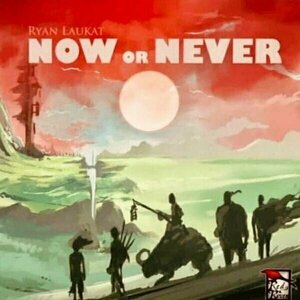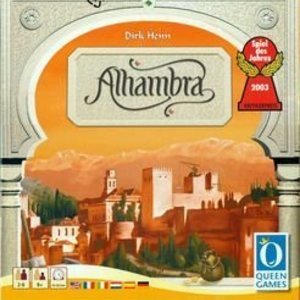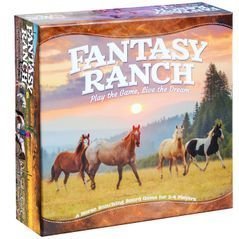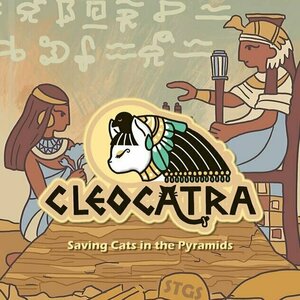
Now or Never
Tabletop Game
Far to the south of The Last Ruin lies a cliffside village called The Monument. For generations, it...

Sonic Dash
Games
App
How fast can the world’s fastest hedgehog run? Play as Sonic the Hedgehog as you dash, jump and...

Modern Combat 5
Games and Entertainment
App
> “It plays as good as it looks.” – IGN > “Amps everything up to the next level.” –...

Unkilled - Multiplayer Zombie Survival
Games
App
The multiply awarded best-looking mobile shooter you have ever seen. Online multiplayer, extra long...

Texas Holdem Poker - Pokerist
Games and Entertainment
App
Play Texas Hold’em Poker free with millions of players from all over the world! Immerse yourself...

Celtic Tribes - MMO
Games and Entertainment
App
Celtic Tribes - Real-time strategy for true chiefs Peaceful settlers as well as the battle hungry...

Alhambra
Tabletop Game
Granada, 1278. At the foot of the Sierra Nevada mountains, one of the most exciting and interesting...
Boardgames ModernClassics TonsofExpansions

Fantasy Ranch
Tabletop Game
Welcome to Fantasy Ranch! Kick off your boots and pull up a chair for a game where all your dreams...
Purple Phoenix Games (2266 KP) rated Cleocatra in Tabletop Games
Mar 3, 2020
In Cleocatra players are, “saving cats in the pyramids.” Once these cats are saved and the pyramids cleared (scored) inspectors can sweep through to confirm they have been cleared. While points do not equate to number of cats saved, the first player to earn 23 points will signify the final round of play.
DISCLAIMER: We were provided a prototype copy of this game for the purposes of this review. These are preview copy components, and the final components will probably be different from these shown. Also, it is not my intention to detail every rule in the game, as there are just too many. You are invited to back the game through the Kickstarter campaign, order from your FLGS, or purchase through any retailers stocking it after fulfillment. -T
To setup, place the score card on the table somewhere in view of all players. The score card will track, well, scoring as well as be a handy reference sheet for all. Shuffle and stack all triangular cat tiles according to the rulebook and place somewhere within reach of all players. Each player will choose a color, place their score cube on the score card, and take their matching meeples. Keep the brown inspector cubes nearby to be used in play. Per the rules, in turn order, each player will flip a tile from the stack and place one of their meeples upon it. The game may now begin in earnest!
A player will have many choices upon the start of a turn, but a turn must include two total actions: a Tile action and a Rescuer action OR two Rescuer actions. Tile actions include Scout and Search. To Scout, simply turn over the top tile from the stack and place it adjacent to an existing tile on the table. A Search action requires an unoccupied existing tile to be moved from one location to another. Similar to movement in Hive, a Search action must not cause the pyramids structure to break into pieces nor move a completely surrounded tile.
Rescuer actions include Dispatch, Team Up, and Rescue (score). When a player uses Dispatch, they place a meeple on a tile they just previously moved in the Search action. To Team Up, simply place a new meeple on a tile adjacent to another tile with one of that player’s meeples… creating a small team. When a player Rescues, they score for a meeple on a tile according to the rulebook – points are tallied based on different cat tile types being adjacent, with additional points for having team members in adjacent spaces. After a Rescue action is taken, remove the meeple from the tile that was scored and replace it with one of the brown inspector cubes. The inspectors prevent tiles from being moved on future turns until they are placed elsewhere.
Play continues in this fashion until a player has earned or surpassed 23 points. At that time, the current round finishes and the game immediately ends. The player with the most points at the end of the final tally wins and is given a pet cat as a result! Ok, our games have never ended that way, but I would totally give away my cat if I had one.
Components. Again, this is a prototype copy of the game, and it is scheduled to hit Kickstarter soon. However, the art style on this one is super cute. The other components (meeples, inspector cubes, etc) may end up being different and be better color-matched, but for a prototype, they were just fine. I have not yet seen any concept art or anything to comment on, so for components, I have little to say, other than the box art is great, as is the art for the cat tiles. So if that style continues and is stretched to the other components, this is going to be VERY cute.
This one came as a shock to me. So few components, but a lot to think about. Should I bring out a new tile or move the existing ones to create a long string of different cats to score big? Should I put out a new helper? I should put out a new helper. I think the best part about this game for me is the fact that I never really felt like any option was a poor option. I mean, you can definitely tank this one and not get much out of it, but then why play anything? Cleocatra is certainly a game that rewards you for continual plays. The more you play, the better you become. I guess that goes for anything in life, really. The rewards come to those who practice. The game is light, but not light-hearted. If you enjoy the tile movement of Hive, but bugs are too icky, try Cleocatra. If you like small games that can fit on an airplane tray but still give you a challenge, try Cleocatra. If you enjoy games with cats, try Cleocatra.
If this is your kind of game, consider backing it on Kickstarter when it launches on March 11. If you want more information, please visit the game’s website, where you can find downloadable rules and print-n-play files. Tell ’em ol Travis from Purple Phoenix Games sent ya.

